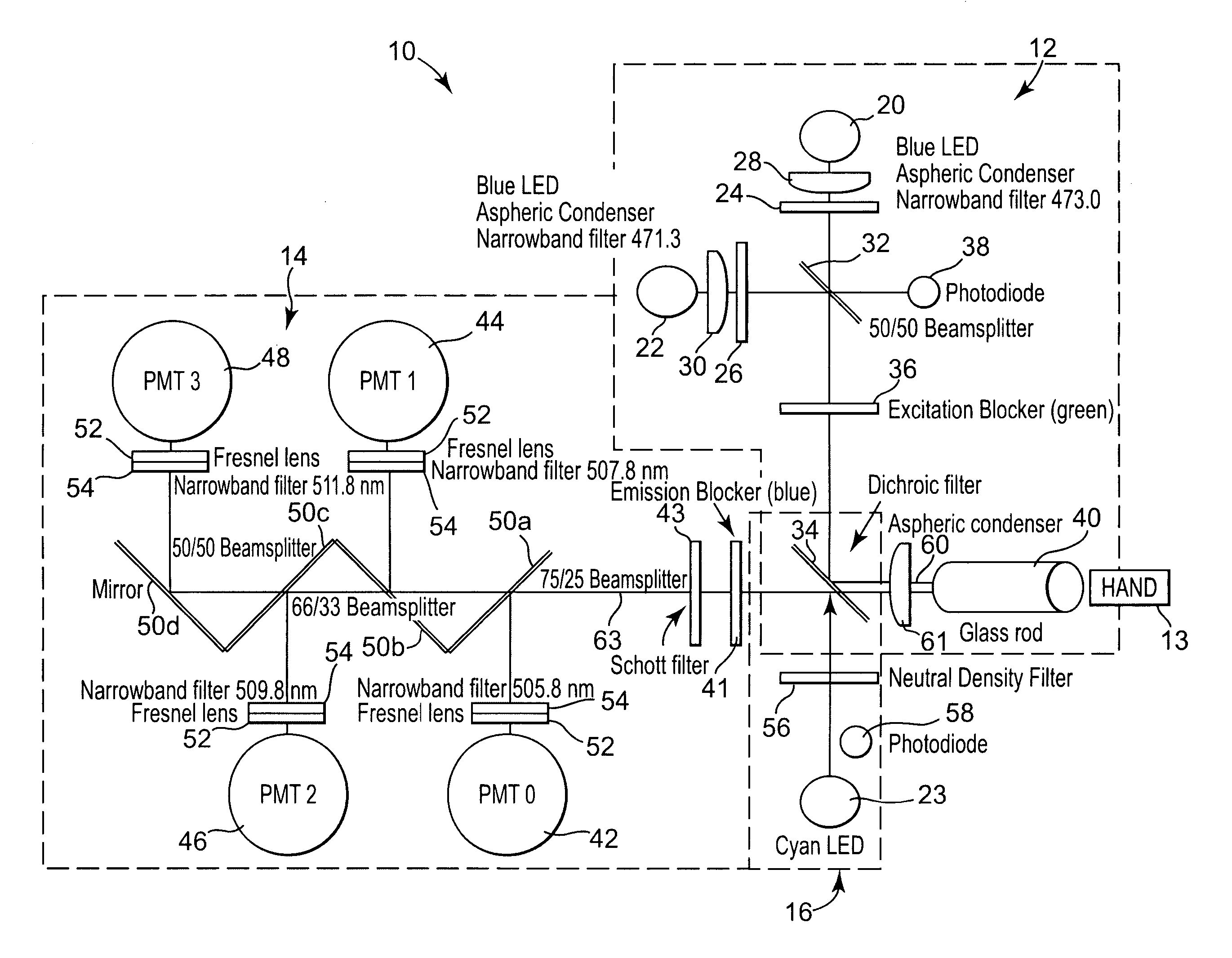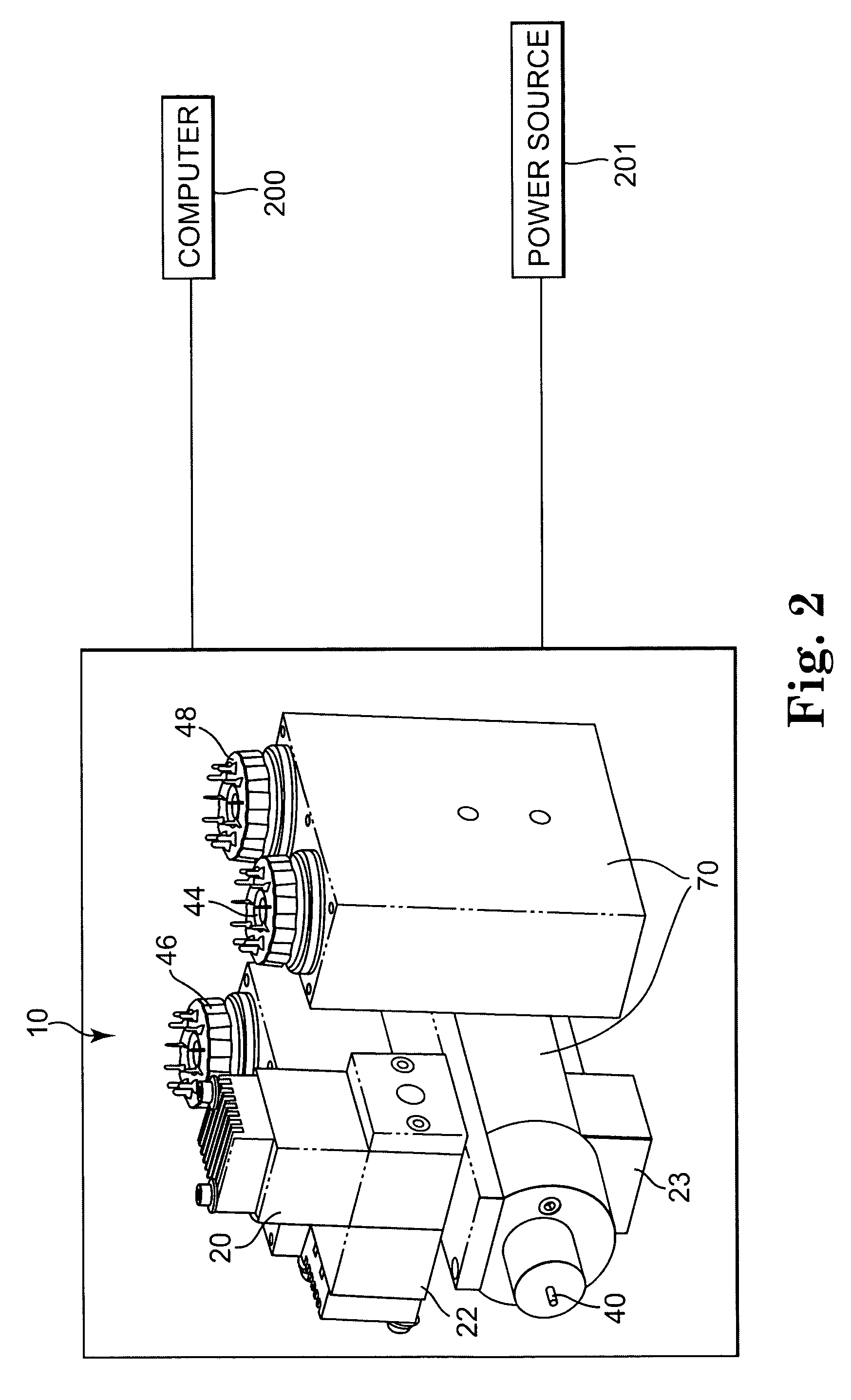Raman instrument for measuring weak signals in the presence of strong background fluorescence
a background fluorescence and weak signal technology, applied in the direction of instruments, spectrometry/spectrophotometry/monochromators, optical radiation measurement, etc., can solve the problem of low levels of carotenoids and related substances such as retinoids as high risk factors for malignant lesions, and the signal intensity of raman spectroscopy is very low, and the effect of raman scattered light intensity
- Summary
- Abstract
- Description
- Claims
- Application Information
AI Technical Summary
Benefits of technology
Problems solved by technology
Method used
Image
Examples
Embodiment Construction
[0037] A method and apparatus for the measurement of the levels of carotenoids and other related substances or other selected molecules in biological tissue or a target sample, such as living skin is provided. The apparatus comprises an excitation portion, an analyzer portion, and a calibration portion. The apparatus enables noninvasive, rapid, safe, and accurate determination of the levels of carotenoids (including their isomers and metabolites) and similar substances in tissue. This information can be a marker for conditions where carotenoids or other antioxidant compounds may provide useful information.
[0038] Examples of biological tissues which can be measured non-invasively with the technique of the invention include human skin on a hand. It is anticipated that measurements may also be made for cervix, colon, and lungs. With the addition of appropriate sample presentation accessories, it is expected that bodily fluids that can be measured will include saliva, whole blood, and ...
PUM
 Login to View More
Login to View More Abstract
Description
Claims
Application Information
 Login to View More
Login to View More - R&D
- Intellectual Property
- Life Sciences
- Materials
- Tech Scout
- Unparalleled Data Quality
- Higher Quality Content
- 60% Fewer Hallucinations
Browse by: Latest US Patents, China's latest patents, Technical Efficacy Thesaurus, Application Domain, Technology Topic, Popular Technical Reports.
© 2025 PatSnap. All rights reserved.Legal|Privacy policy|Modern Slavery Act Transparency Statement|Sitemap|About US| Contact US: help@patsnap.com



